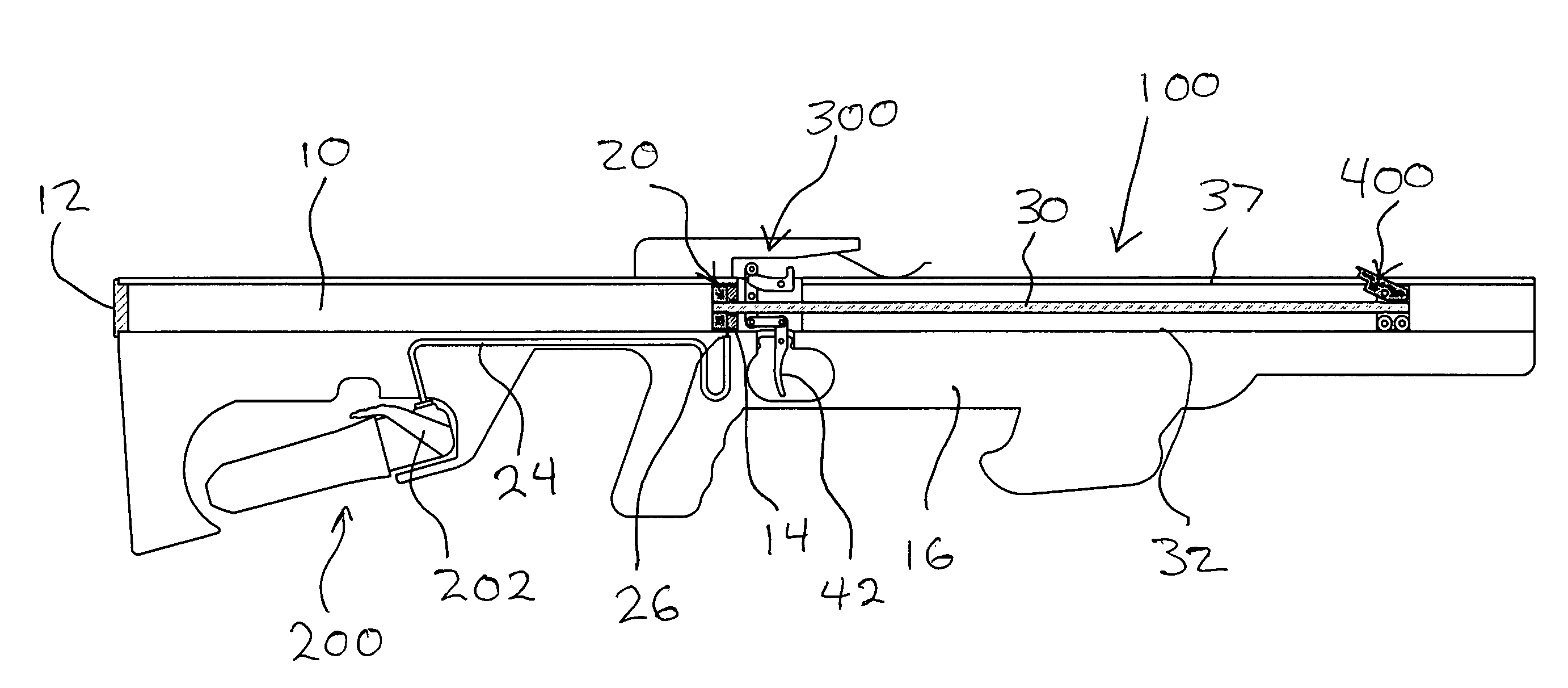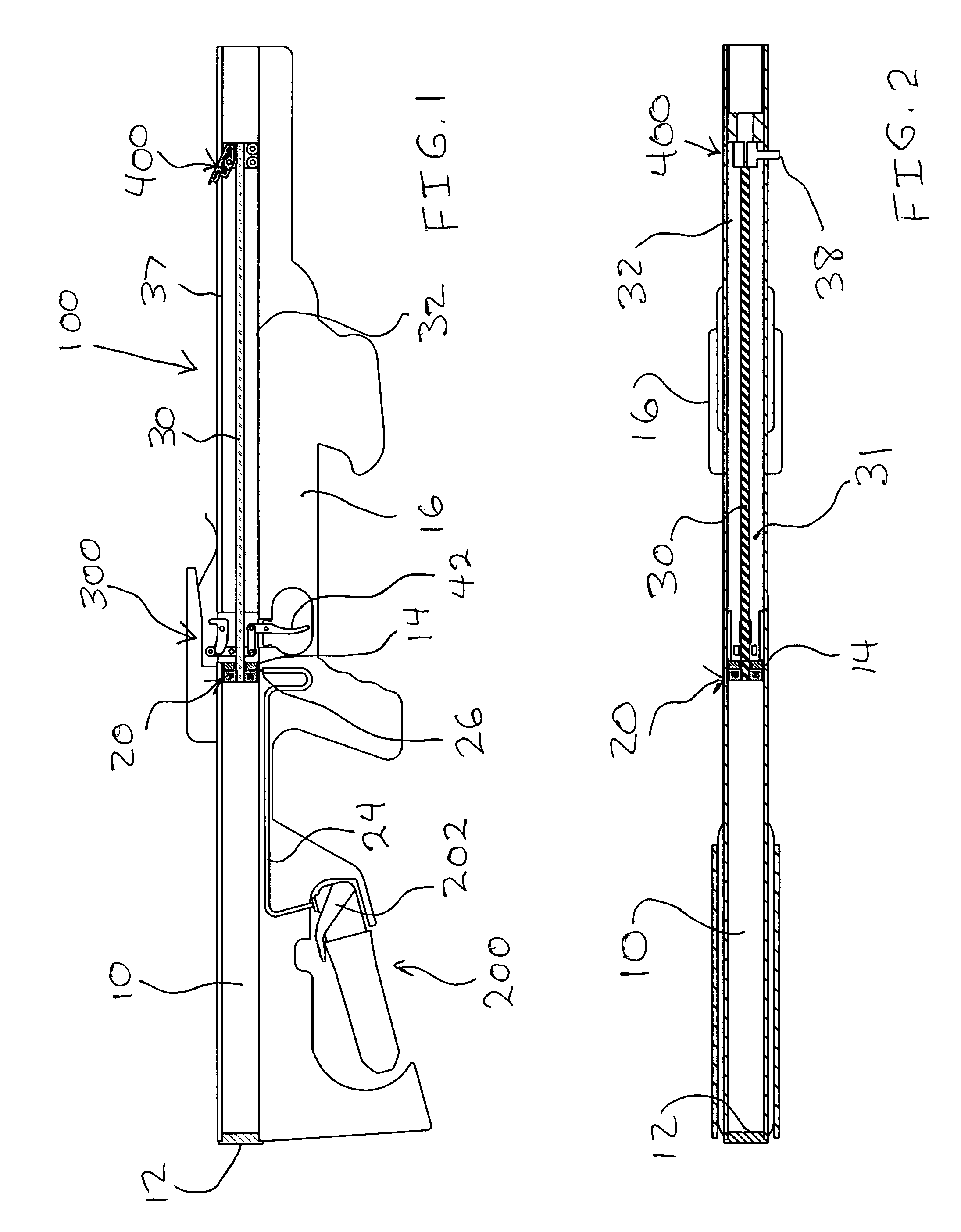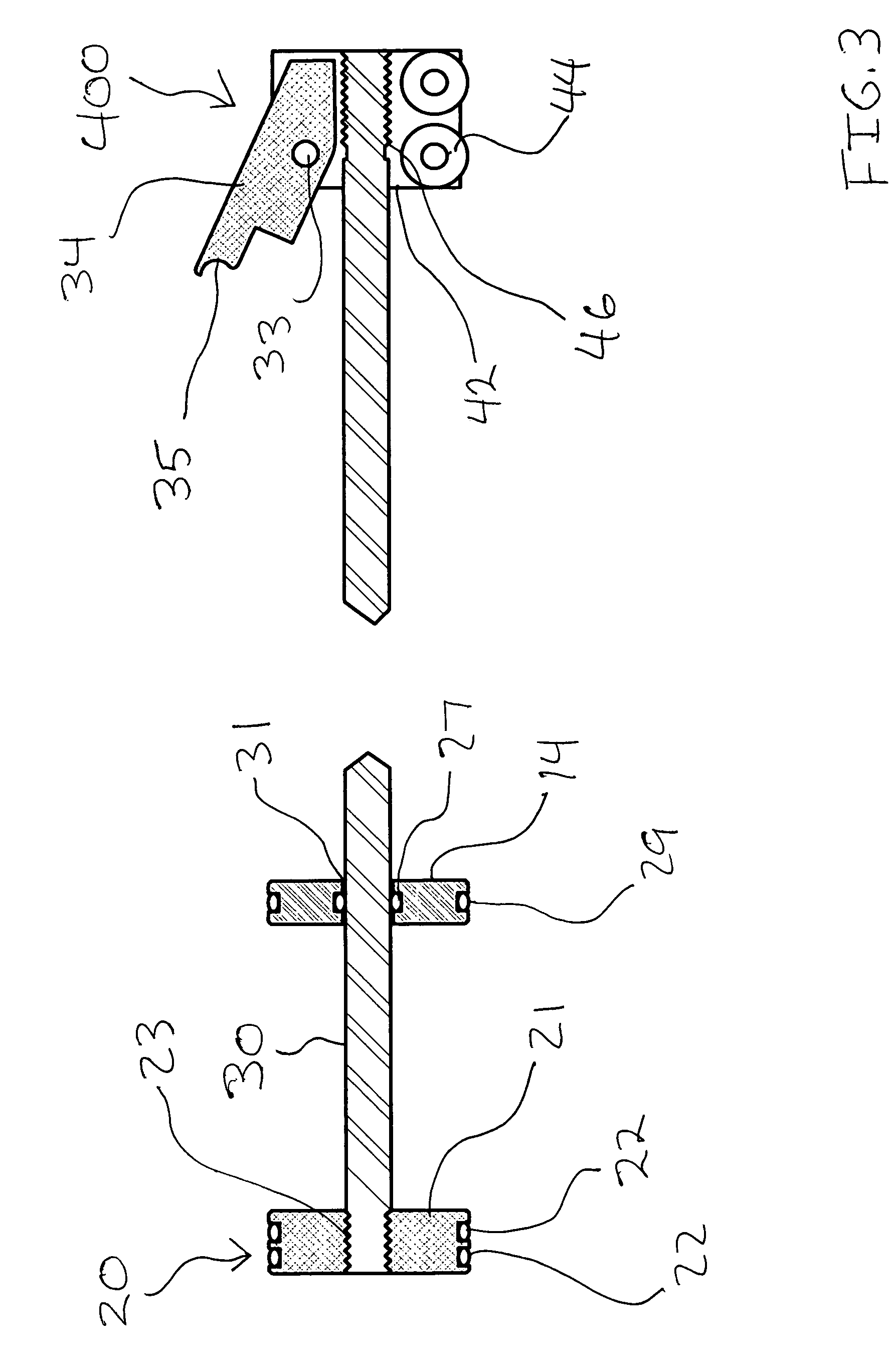Pneumatic cocking device
- Summary
- Abstract
- Description
- Claims
- Application Information
AI Technical Summary
Benefits of technology
Problems solved by technology
Method used
Image
Examples
Embodiment Construction
[0029]In the following detailed description of preferred embodiments of the present invention, reference is made to the accompanying drawings that, in conjunction with this detailed description, illustrate a crossbow cocking and un-cocking mechanism.
[0030]Referring now to the drawings, like-referenced elements indicate corresponding elements throughout the several views or embodiments. Attention is first directed to FIG. 1 which illustrates the preferred embodiment, in-line pneumatically-actuated crossbow 100 shown in a complete side sectional view. For illustration simplification purposes, the bow limbs and bowstring have been omitted from this and all figures.
[0031]FIG. 1, showing the complete invention, preferably orients the pneumatic cylinder 10, piston assembly 20, connecting rod 30, and operatively connected pick up arm assembly 400 all in an in-line layout.
[0032]Pneumatic cylinder 10 is preferably mounted in the crossbow stock 16 and completely housed, thus supported by the ...
PUM
 Login to View More
Login to View More Abstract
Description
Claims
Application Information
 Login to View More
Login to View More - R&D
- Intellectual Property
- Life Sciences
- Materials
- Tech Scout
- Unparalleled Data Quality
- Higher Quality Content
- 60% Fewer Hallucinations
Browse by: Latest US Patents, China's latest patents, Technical Efficacy Thesaurus, Application Domain, Technology Topic, Popular Technical Reports.
© 2025 PatSnap. All rights reserved.Legal|Privacy policy|Modern Slavery Act Transparency Statement|Sitemap|About US| Contact US: help@patsnap.com



